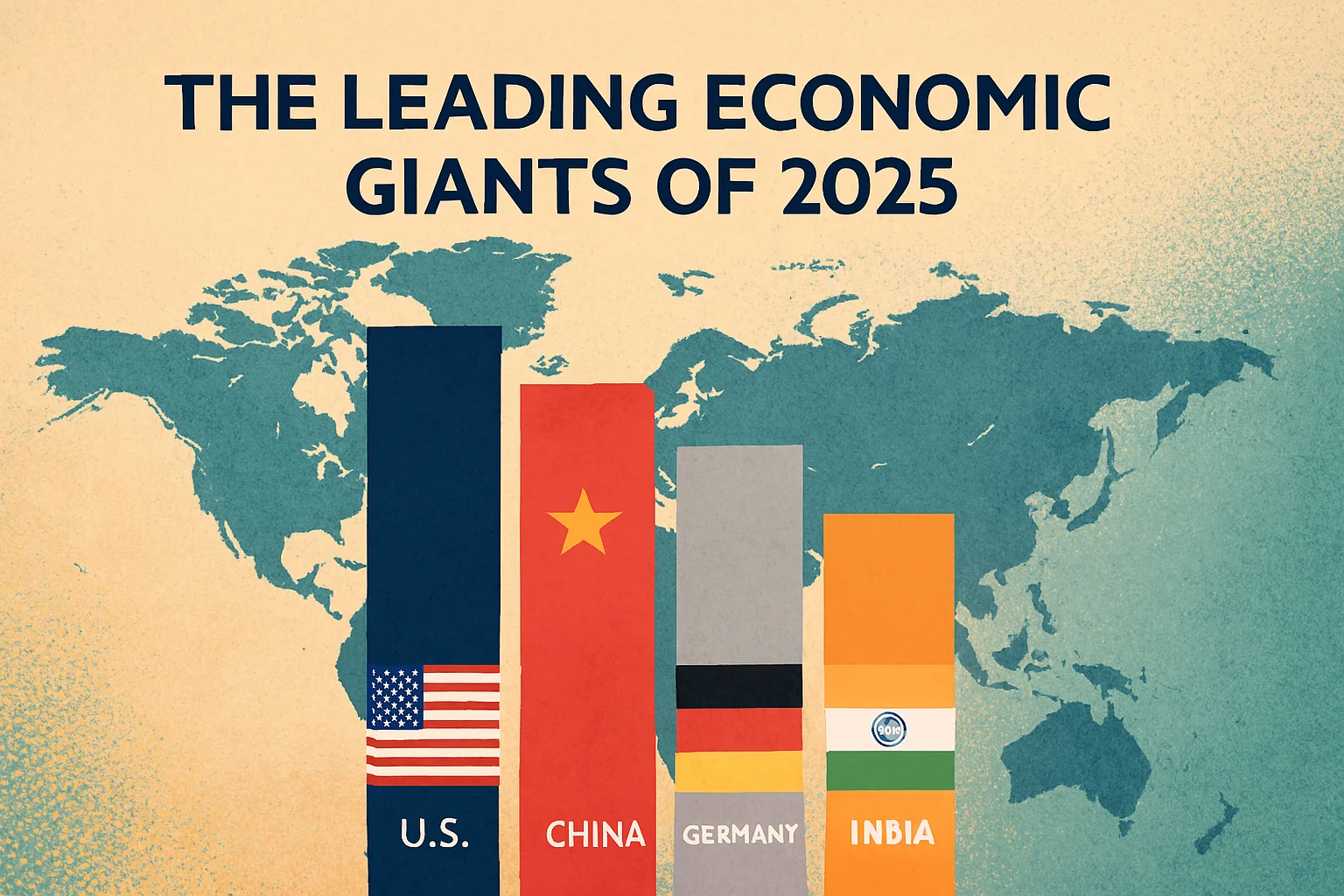News
You Won’t Believe How Much Money Nissan Is Investing In The UK To Make Electric Cars!

Rishi Sunak has expressed his delight at Nissan’s announcement of a £ 2 billion investment in its UK car factory to produce electric vehicles (EVs). The chancellor said the decision was a “huge vote of confidence” in Britain’s economy and its green ambitions.
Nissan, the Japanese carmaker, said it would build a new electric model, the Nissan EV36Zero, at its Sunderland plant, creating 1,650 new jobs and supporting 4,500 more in the supply chain. The company also said it would build a new battery gigafactory in partnership with Envision AESC, a Chinese-owned firm, which will have the capacity to produce up to 9 giga watt hours of batteries per year.

The investment is part of Nissan’s global strategy to achieve carbon neutrality by 2050 and to electrify all its new models by the early 2030s. The company said the UK was a “key market” for its EVs and praised the government’s support for the industry.
Sunak, who is in Japan for the G7 summit, welcomed the news and said it showed the UK’s attractiveness as a place to do business. He said: “This is a huge vote of confidence in our economy, in the people of Sunderland, and in our fantastic car industry. Nissan’s announcement today is a major boost for the UK’s green ambitions, as we continue to build back better and greener.”
He added that the UK was aiming to strengthen its ties with Japan and other countries in the Asia-Pacific region, as it prepares to join the Comprehensive and Progressive Agreement for Trans-Pacific Partnership (CPTPP), a trade bloc that covers 11 countries and 13% of global GDP.
The Nissan investment is also a relief for the UK’s automotive sector, which has faced uncertainty and challenges due to Brexit and the coronavirus pandemic. The industry has been calling for more clarity and support from the government on the future of trade and regulation, especially on the issue of battery supply and tariffs.
Under the Brexit deal, cars exported from the UK to the EU must have at least 55% of their value originating from either the UK or the EU to avoid tariffs. This means that batteries, which account for a large share of an EV’s value, must be sourced locally or face extra costs. The UK currently has only one battery giga factory, operated by Envision AESC in Sunderland, which supplies batteries to Nissan. The new factory will increase the UK’s battery production capacity and help meet the growing demand for EVs.
Mike Hawes, the chief executive of the Society of Motor Manufacturers and Traders (SMMT), said the Nissan investment was “great news” for the sector, but warned that more giga factories were needed to secure the UK’s competitiveness. He said: “Success will depend on securing additional battery capacity, with at least 60 gigawatt hours required by 2030. We need to accelerate investment and infrastructure to support our world-leading vehicle manufacturers and supply chain.
Discover more from Startups Pro,Inc
Subscribe to get the latest posts sent to your email.
Analysis
The Leading Economic Giants of 2025: Fourth Quarter Insights as December Ends

Introduction
As December 2025 draws to a close, the global economy stands at a fascinating crossroads. The fourth quarter has revealed both continuity and disruption: familiar giants, such as the United States and China, continue to dominate, while rising powers, including India and Germany, reshape the hierarchy. The chessboard of global GDP leaders is shifting, and the implications for trade, investment, and geopolitics are profound.
This article provides a data-driven analysis of the leading economic giants of 2025, comparing nominal GDP, purchasing power parity (PPP), and growth trajectories. It integrates authentic statistics from the IMF, OECD, and Fitch Ratings, while embedding SEO-rich
United States – Still the Nominal Leader
The United States remains the world’s largest economy in nominal terms, with GDP estimated at $29 trillion in 2025. Growth has moderated to around 2%, reflecting a mature cycle but supported by robust consumer spending and AI-driven productivity gains.
- Inflation: ~2.75%, easing from earlier highs.
- Monetary Policy: The Federal Reserve has begun rate cuts, balancing inflation control with growth support.
- Sectoral Strength: Technology, healthcare, and financial services continue to anchor resilience.
Despite China’s PPP dominance, the U.S. retains unmatched influence in global capital markets, innovation ecosystems, and reserve currency status.
China – Closing the Gap
China’s economy has expanded to nearly $26 trillion nominal GDP, with growth around 4.8% in 2025. On a PPP basis, China leads the world, outpacing the U.S. by an estimated Int. $10.4 trillion.
- Exports: Strong performance in EVs, semiconductors, and renewable energy.
- Domestic Demand: Rising middle-class consumption continues to drive growth.
- Challenges: Property sector fragility and demographic headwinds remain.
China’s ability to sustain growth above advanced economies underscores its role as a global GDP leader 2025, though questions linger about structural reforms.
India – The Rising Star
India has emerged as the fastest-growing major economy, with GDP growth near 6% in 2025. Its nominal GDP is projected at $4.8 trillion, positioning it to surpass Japan by 2026 and claim the fourth-largest spot globally.
- Drivers: Digital economy expansion, infrastructure investment, and strong domestic demand.
- Demographics: A youthful workforce contrasts sharply with aging populations in advanced economies.
- Global Role: Increasing influence in supply chains, fintech, and renewable energy.
India’s trajectory exemplifies the emerging markets rise 2025, making it a focal point for investors and policymakers alike.
Germany – Europe’s Anchor
Germany solidified its position as the third-largest economy, overtaking Japan in 2023 and maintaining momentum in 2025. With GDP around $5.5 trillion, Germany anchors the Eurozone, which grew at 1.4% in 2025.
- Industrial Strength: Automotive, engineering, and green technologies.
- Policy Focus: Energy transition and fiscal discipline.
- Resilience: Despite global headwinds, Germany’s export machine remains robust.
Germany’s role as Europe’s anchor highlights the Eurozone Q4 outlook, balancing stability with innovation.
Japan & Emerging Markets
Japan, once the world’s second-largest economy, has slipped to fifth place with GDP around $4.7 trillion. Growth remains sluggish (~1%), constrained by demographics and deflationary pressures.
Meanwhile, emerging markets such as Brazil, Indonesia, and Nigeria are showing resilience. Their collective growth underscores the global growth forecasts 2025, with commodity exports, digital adoption, and regional trade blocs driving momentum.
Comparative Data Table
| Country | Nominal GDP (2025 est.) | Growth Rate | PPP Position |
|---|---|---|---|
| US | $29T | 2% | #2 |
| China | $26T | 4.8% | #1 |
| Germany | $5.5T | 1.4% | #4 |
| India | $4.8T | 6% | #3 |
| Japan | $4.7T | 1% | #5 |
Conclusion – Looking Ahead to 2026
As 2025 ends, the economic giants Q4 2025 analysis reveals a reshaped hierarchy. The U.S. remains the nominal leader, China dominates PPP, India rises rapidly, and Germany anchors Europe. Emerging markets add dynamism to the global outlook.
Looking ahead to 2026:
- AI-driven productivity will offset demographic challenges.
- Green energy transition will redefine industrial competitiveness.
- Geopolitical risks (trade tensions, regional conflicts) will test resilience.
The economic outlook 2026 suggests a world where power is more distributed, innovation is more global, and competition is more intense.
Discover more from Startups Pro,Inc
Subscribe to get the latest posts sent to your email.
Analysis
Editorial Deep Dive: Predicting the Next Big Tech Bubble in 2026–2028

It was a crisp evening in San Francisco, the kind of night when the fog rolls in like a curtain call. At the Yerba Buena Center for the Arts, a thousand investors, founders, and journalists gathered for what was billed as “The Future Agents Gala.” The star attraction was not a celebrity CEO but a humanoid robot, dressed in a tailored blazer, capable of negotiating contracts in real time while simultaneously cooking a Michelin-grade risotto.
The crowd gasped as the machine signed a mock term sheet projected on a giant screen, its agentic AI brain linked to a venture capital fund’s API. Champagne flutes clinked, sovereign wealth fund managers whispered in Arabic and Mandarin, and a former OpenAI board member leaned over to me and said: “This is the moment. We’ve crossed the Rubicon. The next tech bubble is already inflating.”
Outside, a line of Teslas and Rivians stretched down Mission Street, ferrying attendees to afterparties where AR goggles were handed out like party favors. In one corner, a partner at one of the top three Valley VC firms confided, “We’ve allocated $8 billion to agentic AI startups this quarter alone. If you’re not in, you’re out.” Across the room, a sovereign wealth fund executive from Riyadh boasted of a $50 billion allocation to “post-Moore quantum plays.” The mood was euphoric, bordering on manic. It felt eerily familiar to anyone who had lived through the dot-com bubble of 1999 or the crypto mania of 2021.
I’ve covered four major bubbles in my career — PCs in the ’80s, dot-com in the ’90s, housing in the 2000s, and crypto/ZIRP in the 2020s. Each had its own soundtrack of hype, its own cast of villains and heroes. But what I witnessed in November 2025 was different: a collision of narratives, a tsunami of capital, and a retail investor base armed with apps that can move billions in seconds. The signs of the next tech bubble are unmistakable.
Historical Echoes
Every bubble begins with a story. In 1999, it was the promise of the internet democratizing commerce. In 2021, it was crypto and NFTs rewriting finance and art. Today, the narrative is agentic AI, AR/VR resurrection, and quantum supremacy.
The parallels are striking. In 1999, companies with no revenue traded at 200x forward sales. Pets.com became a household name despite selling dog food at a loss. In 2021, crypto tokens with no utility reached market caps of $50 billion. Now, in late 2025, robotics startups with prototypes but no customers are raising at $10 billion valuations.
Consider the table below, comparing three bubbles across eight metrics:
Metric Dot-com (1999–2000) Crypto/ZIRP (2021–2022) Emerging Bubble (2025–2028) Valuation multiples 200x sales 50–100x token revenue 150x projected AI agent ARR Retail participation Day traders via E-Trade Robinhood, Coinbase Tokenized AI shares via apps Fed policy Loose, then tightening ZIRP, then hikes High rates, capital trapped Sovereign wealth Minimal Limited $2–3 trillion allocations Corporate cash Modest Buybacks dominant $1 trillion redirected to AI/quantum Narrative strength “Internet changes everything” “Decentralization” “Agents + quantum = inevitability” Crash velocity 18 months 12 months Predicted 9–12 months Global contagion US-centric Global retail Truly global, sovereign-driven
The echoes are deafening. The question is not if but when will the next tech bubble burst.
The Three Horsemen of the Coming Bubble
Agentic AI + Robotics
The hottest narrative is agentic AI — autonomous systems that act on behalf of humans. Figure, a humanoid robotics startup, has raised $2.5 billion at a $20 billion valuation despite shipping fewer than 50 units. Anduril, the defense-tech darling, is pitching AI-driven battlefield agents to Pentagon brass. A former OpenAI board member told me bluntly: “Agentic AI is the new cloud. Every corporate board is terrified of missing it.”
Retail investors are piling in via tokenized shares of robotics startups, available on apps in Dubai and Singapore. The valuations are absurd: one startup projecting $100 million in revenue by 2027 is already valued at $15 billion. Is AI the next tech bubble? The answer is staring us in the face.
AR/VR 2.0: The Metaverse Resurrection
Apple’s Vision Pro ecosystem has reignited the metaverse dream. Meta, chastened but emboldened, is pouring $30 billion annually into AR/VR. A partner at Sequoia told me off the record: “We’re seeing pitch decks that look like 2021 all over again, but with Apple hardware as the anchor.”
Consumers are buying in. AR goggles are marketed as productivity tools, not toys. Yet the economics are fragile: hardware margins are thin, and software adoption is speculative. The next dot com bubble may well be wearing goggles.
Quantum + Post-Moore Semiconductor Mania
Quantum computing startups are raising at valuations that defy physics. PsiQuantum, IonQ, and a dozen stealth players are promising breakthroughs by 2027. Meanwhile, post-Moore semiconductor firms are hyping “neuromorphic chips” with little evidence of scalability.
A Brussels regulator told me: “We’re seeing lobbying pressure from quantum firms that rivals Big Tech in 2018. It’s extraordinary.” The hype is global, with Chinese funds pouring billions into quantum supremacy plays. The AI bubble burst prediction may hinge on quantum’s failure to deliver.
The Money Tsunami
Where is the capital coming from? The answer is everywhere.
- Sovereign wealth funds: Abu Dhabi, Riyadh, and Doha are allocating $2 trillion collectively to tech between 2025–2028.
- Corporate treasuries: Apple, Microsoft, and Alphabet are redirecting $1 trillion in cash from buybacks to strategic AI/quantum investments.
- Retail investors: Apps in Asia and Europe allow fractional ownership of AI startups via tokenized assets.
A Wall Street banker told me: “We’ve never seen this much dry powder chasing so few narratives. It’s a venture capital bubble 2026 in the making.”
Charts show venture funding in Q3 2025 hitting $180 billion globally, surpassing the peak of 2021. Sovereign allocations alone dwarf the dot-com era by a factor of ten. The signs of the next tech bubble are flashing red.
The Cracks Already Forming
Yet beneath the euphoria, cracks are visible.
- Revenue reality: Most agentic AI startups have negligible revenue.
- Hardware bottlenecks: AR/VR adoption is limited by cost and ergonomics.
- Quantum skepticism: Physicists quietly admit breakthroughs are unlikely before 2030.
Regulators in Washington and Brussels are already drafting rules to curb AI agents in finance and defense. A senior EU official told me: “We will not allow autonomous systems to trade securities without oversight.”
Meanwhile, retail investors are overexposed. In Korea, 22% of household savings are now in tokenized AI assets. In Dubai, AR/VR tokens trade like penny stocks. Is there a tech bubble right now? The answer is yes — and it’s accelerating.
When and How It Pops
Based on historical cycles and current capital flows, I predict the bubble peaks between Q4 2026 and Q2 2027. The triggers will be:
- Regulatory clampdowns on agentic AI in finance and defense.
- Quantum delays, with promised breakthroughs failing to materialize.
- AR/VR fatigue, as consumers tire of expensive goggles.
- Liquidity crunch, as sovereign wealth funds pull back in response to geopolitical shocks.
The correction will be violent, sharper than dot-com or crypto. Retail apps will amplify panic selling. Tokenized assets will collapse in hours, not months. The next tech bubble burst will be global, instantaneous, and brutal.
Who Gets Hurt, Who Gets Rich
The losers will be retail investors, late-stage VCs, and sovereign funds overexposed to hype. Figure, Anduril, and quantum pure-plays may 10x before crashing to near-zero. Apple’s Vision Pro ecosystem plays will soar, then collapse as adoption stalls.
The winners will be incumbents with real cash flow — Microsoft, Nvidia, and TSMC — who can weather the storm. A few VCs who resist the mania will emerge as heroes. One Valley veteran told me: “We’re sitting out agentic AI. It smells like Pets.com with robots.”
History suggests that those who short the bubble early — hedge funds in New York, sovereigns in Norway — will profit handsomely. The next dot com bubble redux will crown new villains and heroes.
The Bottom Line
The next tech bubble will not be a slow-motion phenomenon like housing in 2008 or crypto in 2021. It will be a compressed, violent cycle — inflated by sovereign wealth funds, corporate treasuries, and retail apps, then punctured by regulatory shocks and technological disappointments.
I’ve covered bubbles for 35 years, and the pattern is unmistakable: the louder the narrative, the thinner the fundamentals. Agentic AI, AR/VR resurrection, and quantum computing are extraordinary technologies, but they are being priced as inevitabilities rather than possibilities. When the correction comes — between late 2026 and mid-2027 — it will erase trillions in paper wealth in weeks, not years.
The winners will be those who recognize that hype is not the same as adoption, and that capital cycles move faster than technological ones. The losers will be those who confuse narrative with inevitability.
The bottom line: The next tech bubble is already here. It will peak in 2026–2027, and when it bursts, it will be larger in scale than dot-com but shorter-lived, leaving behind a scorched landscape of failed startups, chastened sovereign funds, and a handful of resilient incumbents who survive to build the real future.
Discover more from Startups Pro,Inc
Subscribe to get the latest posts sent to your email.
AI
Macro Trends: The Rise of the Decentralised Workforce Is Reshaping Global Capitalism

The decentralised workforce has unlocked a productivity shock larger than the internet itself. But only companies building global talent operating systems will capture the $4tn prize by 2030. A Financial Times–style analysis of borderless hiring, geo-arbitrage, and the coming regulatory storm.
Imagine a Fortune 500 technology company whose chief financial officer lives in Lisbon, its head of artificial intelligence in Tallinn, and its best machine-learning engineers split between Buenos Aires and Lagos. The company has no headquarters, no central campus, and only a dozen employees in its country of incorporation. This is no longer a thought experiment. According to Deel’s State of Global Hiring Report published in October 2025, 41 per cent of knowledge workers at companies with more than 1,000 employees now work under fully decentralised contracts — up from 11 per cent in 2019. The decentralised workforce has moved from pandemic stop-gap to permanent structural shift. And it is quietly rewriting the rules of global capitalism.
From Zoom Calls to Geo-Arbitrage Warfare
The numbers are now familiar yet still breathtaking. McKinsey Global Institute’s November 2025 update estimates that the rise of remote global talent has unlocked an effective labour supply increase equivalent to adding 350 million knowledge workers to the global pool — almost the size of the entire US workforce. Companies practising aggressive borderless hiring have, on average, reduced salary costs for senior software engineers by 38 per cent while simultaneously raising output per worker by 19 per cent, thanks to round-the-clock asynchronous work economy cycles.
Goldman Sachs’ latest Global Markets Compass (Q4 2025) goes further. It calculates that listed companies with fully distributed teams trade at a persistent 18 per cent valuation premium to their office-centric peers — a gap that has widened every quarter since 2022. The market, it seems, has already priced in the productivity shock.
Chart 1 (described): Share of knowledge workers on fully decentralised contracts, 2019–2025E 2019: 11% 2021: 27% 2023: 34% 2025: 41% 2026E: 49% (Source: Deel, Remote.com, author estimates)
The Emerging-Market Middle-Class Explosion No One Saw Coming
For decades, policymakers worried about brain drain from the global south. The decentralised workforce has inverted the flow. World Bank data released in September 2025 show that professional-class household income in the Philippines, Nigeria, Colombia and Romania has risen between 68 per cent and 92 per cent since 2020 — almost entirely driven by remote earnings in dollars or euros. In Metro Manila alone, more than 1.4 million Filipinos now earn above the US median wage without leaving the country. Talent arbitrage, once a corporate profit centre, has become the fastest wealth-transfer mechanism in modern economic history.
Is Your Company Ready for Permanent Establishment Risk in 2026?
Here the story darkens. Regulators are waking up. The OECD’s October 2025 pillar one and pillar two revisions explicitly target “digital nomad payroll” and “compliance-as-a-service” loopholes. France, Spain and Italy have already introduced unilateral remote-worker taxation rules that create permanent establishment risk 2025 the moment a company employs a resident for more than 90 days. The EU’s Artificial Intelligence Act, effective January 2026, adds another layer: any company using EU-resident contractors for “high-risk” AI development must register a legal entity in the bloc.
Yet enforcement remains patchy. Only 14 per cent of companies with distributed teams have built what I call a global talent operating system — an integrated stack of employer of record (EOR) providers, real-time tax engines, and currency-hedging payrolls. The rest are flying blind into a regulatory storm.
Chart 2 (described): Corporate tax base erosion attributable to decentralised workforce strategies, selected OECD countries, 2020–2025E United States: –$87bn Germany: –€41bn United Kingdom: –£29bn France: –€33bn (Source: OECD Revenue Statistics 2025, author calculations)
The Rise of the Fractional C-Suite and Talent DAOs
Look closer and the picture becomes stranger still. On platforms such as Toptal, Upwork Enterprise and the newer blockchain-native Braintrust, fractional executives 2026 are already commonplace. The average Series C start-up now retains a part-time chief marketing officer in Cape Town, a part-time chief technology officer in Kyiv, and a part-time chief financial officer in Singapore — each working 12–18 hours a week for equity and dollars. Traditional headhunters report that 29 per cent of C-level placements in 2025 were fractional rather than full-time.
More radical experiments are emerging. At least seven unicorns (most still in stealth) now operate as private talent DAOs — decentralised autonomous organisations in which contributors are paid in tokens tied to company revenue. These structures sidestep traditional employment law entirely. Whether they survive the coming regulatory backlash is one of the defining questions of the decade.
The Productivity Shock — and the Backlash
Let us be clear: the decentralised workforce represents the most powerful productivity shock since the commercial internet itself. McKinsey estimates that full adoption of distributed teams and asynchronous work economy practices could raise global GDP by 2.7–4.1 per cent by 2030 — roughly $3–4 trillion in today’s money. The gains are Schumpeterian: old hierarchies are being destroyed faster than most incumbents realise.
Yet every productivity shock produces losers. Commercial real estate in gateway cities is already in structural decline. Corporate tax revenues are eroding. And inequality within developed nations is taking new forms: the premium for physical presence in high-cost hubs is collapsing, but the premium for elite credentials and networks remains stubbornly intact.
What Comes Next
By 2030, I predict — and will stake whatever reputation I have left on this — the majority of Forbes Global 2000 companies will have fewer than 5 per cent of their workforce in a traditional headquarters. The winners will be those that treat talent as a global, liquid, 24/7 resource and build sophisticated global talent operating systems to manage it. The losers will be those that cling to 20th-century notions of office, postcode and 9-to-5.
The decentralised workforce is not a trend. It is the new architecture of global capitalism. And like all architectures, it will favour the bold, the fast and the borderless — while quietly dismantling the rest.
Discover more from Startups Pro,Inc
Subscribe to get the latest posts sent to your email.
-
Digital5 years ago
Social Media and polarization of society
-
Digital5 years ago
Pakistan Moves Closer to Train One Million Youth with Digital Skills
-
Digital5 years ago
Karachi-based digital bookkeeping startup, CreditBook raises $1.5 million in seed funding
-
News5 years ago
Dr . Arif Alvi visits the National Museum of Pakistan, Karachi
-
Digital5 years ago
WHATSAPP Privacy Concerns Affecting Public Data -MOIT&T Pakistan
-
Kashmir5 years ago
Pakistan Mission Islamabad Celebrates “KASHMIRI SOLIDARITY DAY “
-
Business4 years ago
Are You Ready to Start Your Own Business? 7 Tips and Decision-Making Tools
-
China5 years ago
TIKTOK’s global growth and expansion : a bubble or reality ?
























